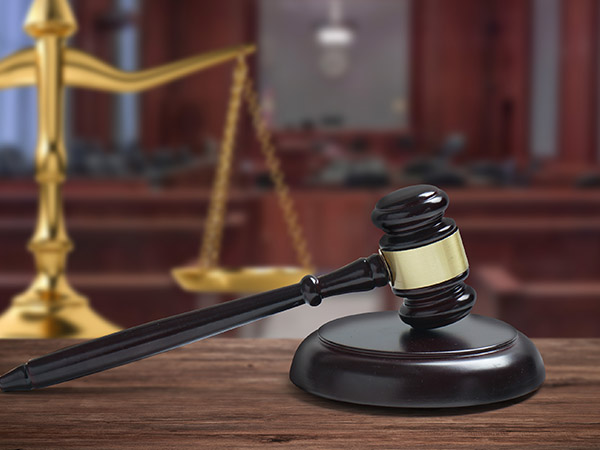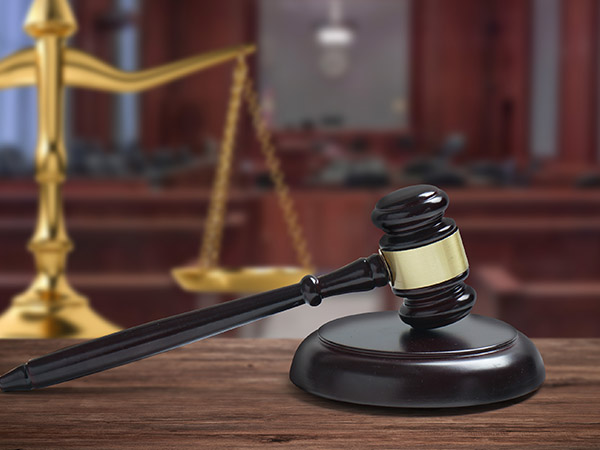The Causes and Judicial Determination of Trademark Dispute Online Games
Guo Zhenhua
Judge of Zhongguancun People's Court, Haidian District People's Court
There has been a rapid development of mobile games since the rise of the mobile Internet. In essence, the development of the mobile Internet relies on and has been driven by software programs. Most of the hardware information has been used to develop platforms to maintain their stability to certain extent. However, the cultural elements in the use of such information are full of personal aesthetic interests. The acquisition and innovation of soft information has become a challenge for game platforms' development. Learning from the classic elements has been used as a successful shortcut to quickly occupy the market, thus making the development of the entire mobile game similar to a Renaissance movement, which is also a microcosm of the mobile Internet industry development. Some of the classical elements have fallen into public domain, while others are still under possessive rights, leading to disputes between emerging market players and traditional ones, among which the trademark disputes involving mobile games are very typical.
Reasons for trademark infringement in online games
There are complicated reasons for trademark infringement in online games, as technical development makes low cost infringement possible, and the life expectancy of rights is relatively uncertain due to ambiguities in combining games and trademarks, especially the use of generic words as trademarks for games, all adding to the confusion of trademark infringement in the online game market.
1. Innate desire for infringement. There are uncontrollable risks for small to medium-sized online game developers because of the short life cycle of such games, the relatively long research and development cycle, as well as the large overhead human resources and material investment, . Instead, the costs may be saved by further development on the basis of well-known games, and drawing the experience of the characters, plots, structures, props, etc. from previous games. At the same time, platform service providers are willing to collaborate with game developers to produce, promote and popularize infringing games in order to earn intermediate profits, which have encouraged the spread of infringing acts and made it more difficult to protect the previously fragile game trademarks.
2. Efficiency in using existing information. The law protects trademarks because the trademark provides consumers with product identity and goodwill. [1] For game service providers, the target of letting the user get used to the characters of the game as soon as possible can be realized by a new conception and package of existing information embedded in game application scenario. The identification is the first information for the user to identify. The game can attract more attention and may be a hot game by the popularization of such identification. It has helped the game companies to tremendously reduce their promotional costs.
3. The complexity of trademark information. Mobile games have three major modules, i.e., characters, interfaces, and programs, all of which interact with one another through the system platform to drive the interaction of the three modules, and can form rules with some logic, to be followed by users. However, these three modules are not exclusively controlled by a single company, who has always looked for various factors in many information sources to be used in its learning and creation. Trademark information has been more often used in game titles or logos, but much of such information lacks distinctiveness or contains generic names or other non-trademark uses. In proving infringement, much information has to be excluded from trademark sign identification and infringement determination. Information's diversification and uncertainty has made it difficult to make judicial determination, due to which the information irrelevant to trademark and trademark use have to be excluded.
4. Insufficient right awareness of emerging market players. Although some emerging market players have strong ability to attract users and increase their popularity to huge extent in their rapid growth, they are vulnerable to market shocks from competitors' imitation and reference because their trademarks are still pending for registration. It is usually difficult to protect the play methods and skills of game as a business model. Games with the same model will result in redundant construction and the market capacity is limited, due to which the appearance of copycat games will increase the number of free riders.
5. Difficulties in determination of the act's nature. Judiciary determination looks for facts as the basis for the application of law which is mainly achieved through the determination of act's nature. The development and prosperity of the mobile game industry has been accompanied by various infringements on the market. Although their commonality can be classified and analyzed, but the law cannot be easily applied to the act with unique characteristics through the use of analogy.
The use of game trademarks
In general, online games, especially mobile games, trademarks are used in three ways: recognizable text, text describing content, and game name. These three types of usage are reflected in the use of the name of the game, promotion of the game, the sign of the game characters and the interface.
For example, in the case of infringement upon the trademark concerning Tencent's Chuanyue Huoxian [2], the defendant's game name is "Chuanyue Huoxian II" (Fankong Jingying Ban)". Obviously, "Chuanyue Huoxian" is the most distinctive part of the name. The mark of Fankong Jingying Ban is usually understood as a game version. And, the words of "Chuanyue Huoxian" are more prominent than the words of "Fankong Jingying Ban" in the frame of the beginning of the defendant's game, which had been referred to as "Chuanyue Huoxian II" in the two defendant's promotion of the game on the website of www.xiaoao.com and the introduction of such game made by many game download platforms. Therefore, the main part of the name of the defendant's game is "Chuanyue Huoxian", due to which the two defendants' use of such name in their game's name constituted trademark use, which would not affect the nature of the two defendants' game name infringing upon the exclusive right of the trademark no matter how long the defendants' game is actually operated, and how much profit they made from such use. In addition, such infringement was also reflected in character names, props, and the starting screens of the game. In the "Quanmin Tuxi" case[3], the court held that the infringer's act constituted trademark use because the infringer not only used "Quanmin Tuxi" as the its game name on every game platform, but also highlighted the words of "Quanmin Tuxi" on the frame at the beginning of the game, making it distinctive so that the relevant public can distinguish different market players who provide games.. Another example is the trademark infringement case of NetEase Company's mark "Menghuan Xiyou". [4] NetEase claim against three defendants for infringement of its registered trademarks of "Furong Xianzi" was dismissed, for it was not used on prominent display, or has obtained well known status through extensive promotion, and the three defendants' descriptive use of the mark in question in nonprominent way are not likely to cause the relevant sectors of the public to associate the mark with the defendants.
The precondition for determination of whether there is infringement upon trademark is whether the infringer's use constitutes the use under trademark law. "If a trademark right owner believes that the act of another person infringes upon his trademark rights, he must prove that such act is an act under trademark law, which means that other's use of such trademark can distinguish the source of goods or services. It is only the act under such precondition that can be recognized as the act infringing the exclusive right to use the registered trademark."[5] The use under trademark law is mainly reflected in the fact that the infringer intends to prompt the users in an eye-catching manner that the goods or service is derived from the obligee, thus creating confusion among the users in terms of the source of such game. This is the common method of infringement upon game trademark. From another point of view, if other's trademark having no popularity to certain extent is used by the infringer in a local manner, such use is not the use under trademark law, which can not be easily recognized as an infringement upon the right to trademark.
As mentioned above, distinctiveness is the decisive factor for determination of infringement by the use of trademark. From the opposite position, the use of generic names is a reverse indicator of obligee's right. Once the trademark is determined as generic name, the obligee's rights will not be protected, and its monopoly of such rights will have no basis to have judicial protection. In the case of Softstar Entertainment Inc.v. Shanda Interactive Entertainment Limited concerning infringement upon the trademark of "Shengda Fuweng" [6], the court ruled that the defendant made no infringement because "Da Fuweng" was the generic name of a "game that simulates real business practices by playing dice points". If a trademark registered on an online game contains a generic name of a type of game, if other does not use the game's name as a trademark to distinguish the source of goods or services, and if it is used only on the online game service to introduce the game's contents and characteristics, there will cause no confusion among the public in terms of the game service provider, and it is a just use of such trademark and constitutes no infringement.
Determination of identical or similar games
There have been international standards for the classification of goods and services in the long-term international practice. Nice Agreement Concerning the International Classification of Goods and Services for the Purposes of the Registration of Marks administered by the World Intellectual Property Organization and The Nice Classification formed on such Agreement have been widely recognized and used internationally. The Classification of Goods and Services contains more than 10,000 items of goods and services and is of value for distinguishing different goods and services.
In general, trademarks for online games are mainly registered in two classes. The first is Class 9: "recorded computer program and software" which mainly refers to the programs and software that have been recorded on relevant media and the software becomes a tangible object after being fixed on the hardware. The trademark registered by Blizzard Entertainment, Inc. for its game "Moshou Shiji" is an example in this regard, which is, under Class 9, "game software that can be used by means of personal computers, video game systems, portable game systems, the Internet, or mobile phones." The second is Class 41: "service trademarks for the services such as those provided by an individual or a group in terms of human and material R&D, and the services for entertainment or amusement." An example in this regard is the trademark of "Moshou Shiji", which in Class 41, is, "online computer game and relevant skills and strategies provided on the global computer network."
Article 11 and Article 12 of Interpretation of the Supreme People's Court on Certain Issues Concerning the Application of Law in the Trial of Civil Cases Involving Trademark Disputes (Fa Shi [2002] 32 Hao) (the Interpretation) stipulate that "similar goods shall mean goods of which the functionality, purposes, production divisions, sales channels, consumers, etc. are the same or goods that have a particular association between each other, as the relevant sectors of the public would believe, which is likely to cause confusion." The determination of the similarity of such goods should be based on a comprehensive judgment of the relevant public about the general knowledge of the goods, with a reference to "The Table for Differentiating Similar Goods and Services" in addition to a determination of whether there is identity or similarity of the relevant goods in terms of function, purposes, production department, sales channel, targeted consumer, etc. However, the determination of similar goods is not merely a purely objective comparison of the physical attributes of the relevant goods, but mainly a consideration of whether trademarks can coexist and whether it can effectively avoid the confusion of the source of goods.
Therefore, whether game trademarks are similar should be judged from many aspects. A judgment based on a single method can lead to misunderstandings. For example, in the case of Usana Health Sciences, Inc. applying for the registration of the "USANA" as trademark, the court held that, although the trademark cited by the plaintiff to be used on the goods such as "herbal medicine" and "baby food" are in the similar group provided for in The Table for Differentiating Similar Goods and Services, there were distinctive differences between the two group of goods in terms of function, sale channel and targeted users, due to which there was no relevance. [7] In the famous case of Canon Kabushiki Kaisha v. Metro-Goldwyn-Mayer Inc.(Formerly Pathe Communications Corporation), the European Court of Justice held that "marks with a highly distinctive character, either of inherent distinctiveness or of acquired distinctiveness, enjoy broader protection than marks with a less distinctive character." [8]
Traditionally, the elements for such determination mainly refer to functions, purposes, production departments, sales channels, and intended consumer. However, the determination of identity or similarity in the field of games should mainly take into account the following aspects: consumer groups, service methods, the upstream and downstream industries, etc. Theoretically speaking, it is very difficult to discern games' consumer population and the degree of their coincidence, and anyone may be a potential consumer. The games can be divided into many types [9]. Although there are also differences between them in terms of consumer groups, service methods and charging methods between and among these games, there may be overlapping in terms of potential consumer groups for each game, due to which secondary development by the borrowing of well-known game brands may cause confusion. From the perspective of game's development, operation and promotion, there are some overlapping which can not be easily classified into a certain group. Therefore, there is a question of upstream and downstream in consideration of similar game service, and especially the consideration of the act of game platform service provider, due to which the determination of whether the use of other's trademark for game's popularization constitutes infringement may be classified into the sort of unfair competition.
In addition , unregistered trademarks cannot be protected in multiple classes. For many game developers as new players on the market, their trademark applications are almost synchronized with the game development process. And, for traditional game developers, many trademarks have already been registered, but the trademarks for their newly developed game are still in the stage of registration. If they have rushed into the market at that time and are counterfeited by others, can their rights be protected? China's Trademark Law provides in its Article 32 that "an application for trademark registration shall not prejudice any pre-existing right of others. It is prohibited to forestall the registration, through any improper means, of a trademark that is already used by another party and has produced a certain influence" and in its Article 59(3) "where, before a trademark registrant applies for registration of the relevant trademark, another party has used before the trademark registrant a trademark that is of certain influence and is identical with or similar to the registered trademark on the same or similar goods, the holder of the exclusive right to use the registered trademark shall have no right to prohibit the said party from continuing to use the trademark within the original scope of use, but may require the latter to add suitable logos for distinguishing purposes." It also means that there may be two stages before the registrant obtains the trademark registration certificate, the first one has already been used, including being promoted, and the second has already been applied but the application for registration has not yet been approved.










